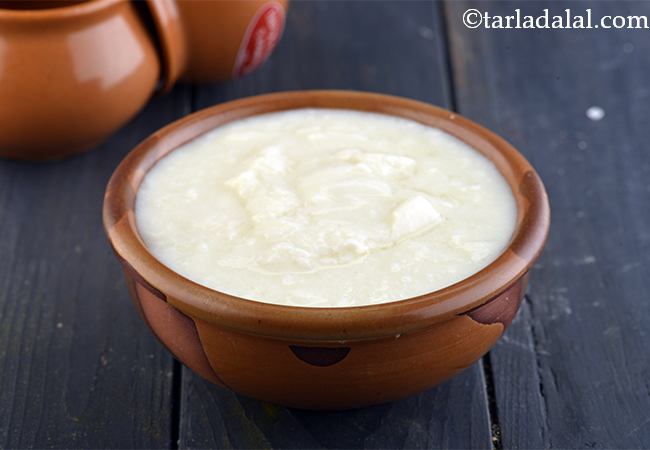See Green Moong Dal and Spring Onion Paratha recipe. Simple though it is to prepare, there is an exotic feel to this Green Moong Dal and Spring Onion Paratha. Prepared with wholesome whole wheat flour, these parathas are stuffed with a delicious combination of cooked green moong dal and crunchy spring onions, perked up with common spice powders. The secret to getting a perfectly textured paratha is to cook the green moong dal to the right consistency, till it is soft and you are able to mash it with your fingers, but not too mushy. This way you will get a nice and grainy filling rather than a gooey one.
Is Green Moong Dal and Spring Onion Paratha healthy?
Yes, this is healthy. But restrictions apply to some.
Let's understand the Ingredients.
What's good.
Moong Dal ( Green Moong Dal ) : Moong dal or green moong dal is rich in Folate, Vitamin B9 or Folic Acid which helps your body to produce and maintain new cells, especially red blood cells and is pregnancy friendly. Being rich in Antioxidants like Flavonoids, mung reduces the damage done by free radicals to the blood vessels and lowers inflammation. Moong Dal is heart and diabetes friendly. Moong Dal or Split Green Gram are high in Fibre and 1 cup of cooked Moong dal gives 28.52% of your daily Fibre requirements. See here for 9 fabulous benefits of Moong Dal.
Spring Onions : The sulfur compounds in spring onions are known to keep blood pressure under check. Here the sulfur compounds and antioxidant quercetin together help to keep blood sugar levels under control by increasing the production of insulin making it good for Diabetics. Spring onions have also been identified to lower cholesterol levels in the body. The vitamin C also puts you at less risk of heart disease. Being very low in calories and fat and encompassing a basketful of nutrients, they are looked upon as a weight loss vegetable too. See detailed benefits of spring onions.
Whole Wheat flour : Whole wheat flour is excellent for diabetics as they will not shoot up your blood sugar levels as they are a low GI food. Whole wheat flour is rich in Phosphorus which is a major mineral which works closely with calcium to build our bones. Vitamin B9 helps your body to produce and maintain new cells, especially increase red blood cells. See detailed 11 benefits of whole wheat flour and why it's good for you.
Ghee : Other than calories and fats, the only nutrients that ghee is rich in are the vitamins – all of which are fat-soluble. All the 3 vitamins (Vitamin A, Vitamin E and Vitamin K) are antioxidants which have a role in removing free radicals from the body and protecting our cell as well as help in maintaining skin health and glow. Ghee is an excellent, high-quality selection medium of cooking because of its high smoke point. As compared to most oils and butter, ghee can handle a smoke point of 230°C, 450°F, thus its less prone to oxidant and destruction of nutrients. Yes, ghee does contain cholesterol, but some amount of cholesterol is needed by the body. Cholesterol has some functions to play too. It is necessary for hormone production, brain function, cell health and lubricating the joints. It is, in reality, a high quality fat for the body and brain. Ghee is loaded with fats but that’s medium chain fatty acids (MCT) which aid in weight loss. Ghee is healthy for daibetics in small amounts and you need to check your fat intake at the same time. Learn to easily make your ghee at home which is free of preservatives. See benefits of ghee.
.JPG)
How To Make Homemade Ghee, Clarified Butter
Can diabetics, heart patients and over weight individuals have Green Moong Dal and Spring Onion Paratha ?
Yes, this recipe is good for diabetics, heart and weight loss. Moong Dal is heart and diabetes friendly. Moong Dal or Split Green Gram are high in Fibre and 1 cup of cooked Moong dal gives 28.52% of your daily Fibre. Spring onions have also been identified to lower cholesterol levels in the body. The vitamin C also puts you at less risk of heart disease. Ghee is, in reality, a high quality fat for the body and brain. Ghee is loaded with fats but that’s medium chain fatty acids (MCT) which aid in weight loss. Ghee is healthy for daibetics in small amounts.
What is a healthy accompaniment to this paratha?
We suggest you pair it with homemade curds using cows milk or low fat curds or a cucumber and pudina raita.

Low Fat Curds ( How To Make Low Fat Curds)
Can healthy individuals have Green Moong Dal and Spring Onion Paratha?
Yes, this is super healthy.
How to burn 106 calories that come from Green Moong Dal and Spring Onion Paratha?
Walking (6 kmph) = 32 mins
Running (11 kmph) = 11 mins
Cycling (30 kmph) = 14 mins
Swimming (2 kmph) = 18 mins
Note: These values are approximate and calorie burning differs in each individual.